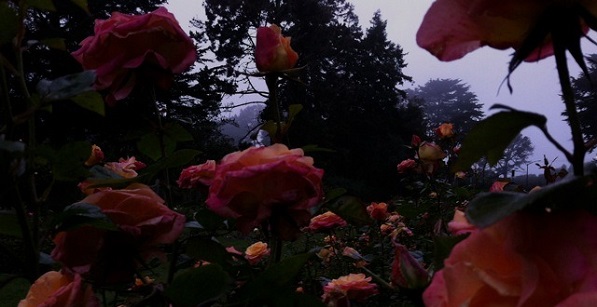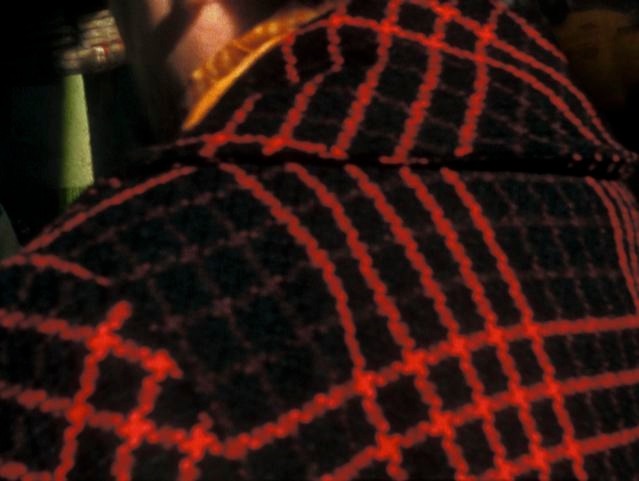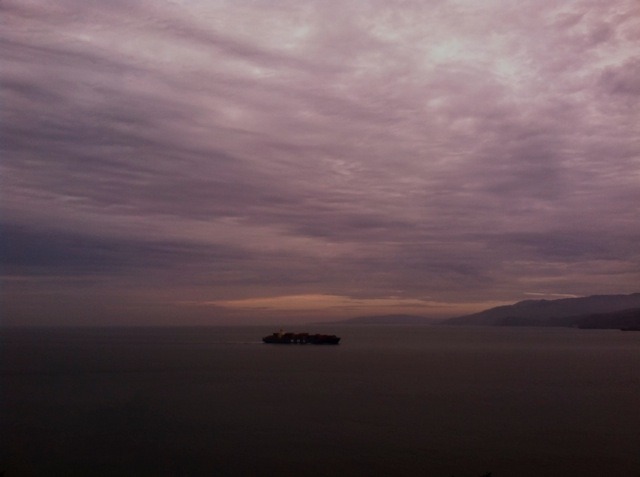
In his book Devotional Cinema, Nathaniel Dorsky attributes the success of the medium’s greatest works to an expression of the “material of the cinema itself, the cinematic qualities that are deeply akin to our own metabolism.” It’s a theory appropriately reflected in the filmmaker’s own output as he has spent the better part of five decades employing the component elements of 16mm stock to modulate the otherwise unstable constituents of the outside world. “Like our hands, the trees, the drama of the seasons, and the warming and expiring heavens,” he continues, “the basic elements of film must partake in the beauty of the deepest practicality.” For a multitude of reasons, this latter thought feels of particular accord with Dorsky’s recent work, through which he has attempted to ameliorate the inherently inharmonious presence of the anthropologic and geographic within a constantly recalibrating ecological framework.

This aesthetic medi(t)ation has arguably been one of Dorsky’s major artistic concerns from the beginning of his career, but at least since a nominal turn toward the seasonal with Winter (2007), his primary preoccupation has shifted to that of the perennial aspects of our everyday environment. The last fifteen months have been an especially productive period for Dorsky, premiering as he has four new films in a planned five-film cycle based around specific divisions of the calendar year. Song and Spring each debuted last year (and together were among my favorites of the year 2013 in avant-garde), while this past April brought the two latest entries, Summer and December (the fifth film, February, screened at the Viennale this past month). Shown in a four-film program at the Crossroads Film Festival in Dorsky’s hometown of San Francisco (where the majority of each film was shot), this latest flurry of creativity appears to be a culmination of many of the theories, themes and techniques that have fascinated the director over the last decade or so.

In his introduction to the program, Dorsky referred to each subsequent film as a “rebalancing from the last.” And though each of these works function within a similar aesthetic framework, there are slight gradations in tone that speak to such methods of reconciliation and realignment on the part of Dorsky—to the point where the cumulative effect of the series is far greater than any one piece could convey on its own. Indeed, each of the four films overflows with sensory pleasures and nascent emotionality, pregnant with a distinct sense of spirituality without ever betraying any literal religious connotation (let alone affiliation). If Dorsky seems less interested here in pushing formal boundaries—such as he did relatively recently with The Return (2011)—instead focusing on the internal potentialities posed by such a conceptual assemblage, there are enough unique touches to justify the series’ iterative designation. The calendar year outlined by Dorsky is thus familiar and slightly alien, recognizable in its tactile representation but observed with such a contextual remove as to render it unfamiliar, almost unsettling.
This feeling of unease is most apparent in Song—in the words of Dorsky, “a winter solstice film”—the moodiest of the pieces and an appropriate step toward the harmonious climates of the proceeding months. The first image, captured at the break of dawn, of a half-open door partially obstructing the encroaching daylight, ably traces the liminal state that Dorsky will spend the remainder of the film navigating. Much of Song, however, is shot in the evening hours, with moonlight and the blur of traffic signals the only source of illumination in these rain-soaked landscapes. As he has in some of his most recent work, particularly August and After (2012), Dorsky appears interested in not only the inherent dynamism of our natural surroundings, but of human interaction with such environs and the compositional dialogue between these two seemingly incompatible entities. There are multiple human figures featured across all these films, though Song seems to hint at slightly more uncomfortable relationships than Dorsky’s other films intimate. Close-ups of hands, shoulders, and necks predominate; when faces do appear, they quite literally come into focus, often emerging from pitch darkness, lending an ominous undercurrent to the proceedings. Placed within such a methodical procession of images, even examples of material production such as latticework drapes and a seemingly incongruous shot of a golden, glittering skull take on a gravity they are not otherwise predisposed to embody.

Spring and Summer, the two longest films at twenty-three-minutes apiece, place their focus more squarely of their respective seasons’ floral features. The former begins with the shot of a puddle, presumably the remnants of a rainy winter. But from there, trees and flowers prevail, with a green, yellow and white botanic palette reflecting the warm comforts of our sunniest months. The dynamic capacity of the films is therefore left to Dorsky’s applied aesthetics. A number of shots in Spring find the director slowly adjusting his camera’s aperture, leading shrouded, shadowy images toward stark luminescence, revealing rich, scenic dioramas in the process. An entire sequence in Summer, meanwhile, is subjected to a sped-up, kind of time-lapsed optical effect which horizontally blurs the after-hours reflections of headlights and street lamps across an asphalt expanse (and when technical methods—rack focus is also frequently employed—aren’t appropriate, an elemental but charged move of the camera will suffice). Humanity in these instances is more of a spectral presence, but is nonetheless powerfully felt in a shot from a moving train (industrial), as well as images of neon news tickers (commercial) and oily pigments left wafting in still water (ecological).

Perhaps the most elusive of the films thus far, December is a comparatively brief (thirteen-minute) return to the nocturnal ambiance of Song, but with a notably wider concern for urban reality. The most metropolitan of the entries, December alternates between ambiguous swaths of colors and cloths (the first shot of the film, an unstable view of an unidentified red object skirting the edges of an unfocused plane of darkness, is never fully revealed) and more concrete images of suspension bridges, cars, subway grates, video screens and storefront windows. Befitting its wintertime denomination, there are also multiple shots of brown leaves, bare branches, and plants which seem to be breathing their last bit of oxygen for the remainder of the season. Dorsky refers to the film as “a response to the world,” and along with such other unexpected images such as a stoic seagull perched along the bay or a bundle of balloons swaying in the breeze, this piece certainly betrays the interests of a man living in the everyday world, and even more so a filmmaker who can locate the same sense of serenity in the inanimate as he can in the living.

Returning to Devotional Cinema, Dorsky speaks in another passage of our “nighttime minds” and “daytime minds” with regard to how we mentally process and experience editing while watching films. As alluded to previously, each of these four works feature a seemingly discordant image or sequences of images, from the shimmering skull in Song to the accelerated transition in Summer to the array of material elements on display in December. And it’s this play between the cognizant and the unconscious and the way Dorsky can activate and access such recesses of our mind with but a simple, clean edit and the introduction of a common object or image—somehow triggering an emotional response through such an unexpected juxtaposition—that continues to speak most persuasively to his mastery of the visual medium. Summer likewise features a startling edit, taking us in a single cut from the tranquil landscapes of the Bay Area to what appears to be the Alcázar of Seville in Spain, settling atop a placid reflection that soon reveals itself as a long mote flanked by a massive, cathedral-like overhang (this waterway, referred to as ‘The Baths of Lady María de Padilla,’ is in actuality a giant rainwater basin located beneath the Alcázar’s ‘Patio del Crucero’). Dorsky holds the shot for a number of seconds before cutting in about half the distance toward the water’s horizon, engulfing the frame in the structure’s golden aura. It’s the single most breathtaking shot thus far in this series of seasonal films, and a convenient encapsulation of its many themes, severing the distance between the radiant and the opaque and our suspended and sentient states of enlightenment.



